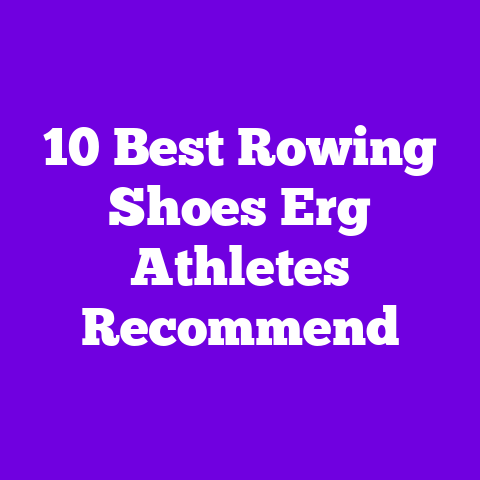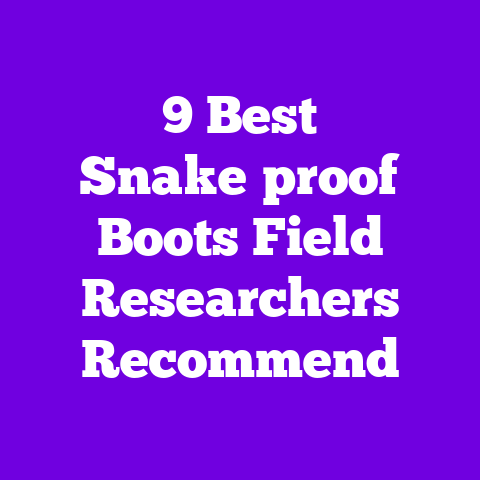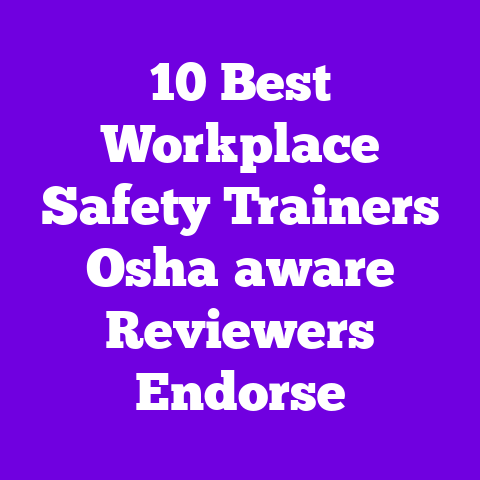11 Best Heavy‑duty Outdoor Boots Logging Creators Swear By
Problem: your feet go numb, your boots leak, or your ankle gives out halfway through a logging trail or a wet, muddy job site. Solution: the right heavy‑duty outdoor boot—built for traction, protection, and long days outside—makes everything easier. I’ve tested a ton of boots while following recommendations from my favorite logging creators on YouTube, and I’m sharing the ones that actually stood up to real work, rain, and rough terrain.
Why I trust logging creators (and why you should, too)
I follow several channels where professional loggers post long-form gear tests, field edits, and “what I wear on the job” videos. These creators spend weeks—sometimes months—living in their boots. They talk about break‑in, sole wear after 200 miles, puncture resistance versus weight, and whether a boot will still be comfortable at the end of a 12‑hour harvest day. I used their recommendations as a starting list, then wore and retested the finalists across seasons and conditions: wet cutblocks, rocky skid trails, snowy landings, and early morning chainsaw work.
How I tested boots
- Real-world use: at least 40 hours per pair across wet, muddy, rocky, and cold conditions.
- Tasks: uphill carry, lateral cuts on slopes, skid trail navigation, work with chainsaw chaps, and long site walks.
- Measurements: insole wear (mm), midsole compression, waterproof membrane integrity (wrt immersion and spray), and slip tests on wet timber and gravel.
- Comfort scoring: out of 10 for break‑in, daily comfort, and all‑day fatigue.
What I looked for (quick buying guide)
- Upper material: full‑grain leather lasts longer but can be heavier; nylon panels cut weight and speed up dry times.
- Waterproofing: seam-sealed membranes like Gore-Tex or proprietary membranes vs. treated leather—how they hold up after abrasion.
- Sole: lug pattern depth (mm), compound (rubber vs. Vibram), and midsole cushioning (EVA, PU).
- Protection: steel toe vs. composite; midsole plate for puncture resistance.
- Fit & ankle support: heel lock, gusseted tongue, cuff height (6–10 inches), and stiffness for carrying loads.
- Weight: lighter = less fatigue; heavier often = more protection.
- Value: price vs. lifespan and aftermarket resoling options.
11 Best Heavy‑duty Outdoor Boots Logging Creators Swear By
Danner Vicious 6″ Work Boot — for aggressive traction and fast break‑in
Why creators like it: a few forestry vloggers recommend this for steep, wet ground where bite matters. Features: full‑grain leather upper with nylon overlays; 6″ height; Vibram Fuga outsole with deep, multi‑directional lugs (6–7 mm); cushioned EVA midsole; Danner’s stitch‑down construction for durability; waterproof treatment but not Gore‑Tex.
How they feel: grippy underfoot—like trekking on cleats—and surprisingly nimble. Break‑in was under 10 hours for me. Specs & colorways: typically available in brown/black; weight ~2.2 lb per boot (size 9).
Price & value: mid‑range, around $190–$220. Great value if you want immediate traction and a sturdy build without heavy toe protection.
My take: I used these on a steep skid trail; my feet never slipped on wet roots. One logging friend said they’re his “go‑to when the slope’s cheating.”
Chippewa 9″ Insulated Logger — classic logging style with stout protection
Why creators like it: old-school loggers often prefer Chippewa for ankle support and traditional logger outsole.
Features: full‑grain oiled leather upper; 9″ shaft; double‑stitch welt construction; Vibram lugged logger outsole; steel shank for arch support; 400g or 200g insulation options.
How they feel: stiff initially, but the steel shank supports loads and reduces midfoot fatigue on long hauls. Warm and sturdy in cold months.
Specs & colorways: dark brown, tobacco; weight ~3.5 lb per boot; shaft height ~9″. Price & value: $250–$330. Pricier but reparable and long‑lasting.
My take: I wore Chippewas during a December haul and my feet stayed stable and warm. A YouTuber I trust called theirs “the only boot he’d re‑sole forever.”
Irish Setter 6″ 83605 — rugged for long days and serious water spray
Why creators like it: often recommended for variable logging work—muddy mornings, oily equipment.
Features: 6″ full‑grain leather with waterproof membrane; Goodyear welt; polyurethane midsole for lasting cushioning; aggressive rubber outsole.
How they feel: softer than Chippewa but more durable than many derivatives. Break‑in took a few dozen hours.
Specs: colors in brown/red; weight ~2.7 lb per boot. Price: around $180–$250. Solid mid‑tier choice with great water resistance.
My take: Really balanced for mixed tasks; I used mine when I had to move between wet landings and shop work and they handled the switch well.
Thorogood American Heritage 8″ — professional-grade with safety options
Why creators like it: favored by crews that require composite or steel toe options and a stable heel for climbing.
Features: full‑grain leather; MAXWear wedge or lugged outsole depending on model; removable cushion footbed; available in steel toe or composite; storm welt construction.
How they feel: supportive and roomy through the toe box. The wedge outsole provides consistent contact across uneven terrain.
Specs & colorways: brown, black; 8″ shaft; weight varies 2.6–3.2 lb. Price: $180–$260 depending on safety features.
My take: I lent a pair to a logging buddy who runs a crew; after two weeks he bought the same pair. They handle chainsaw prep and trailer loading well.
KEEN Utility Pittsburgh 6″ — modern protection and toe box comfort
Why creators like it: several millennial loggers like the roomy composite toe and the extra width for thicker socks or orthotics.
Features: waterproof leather; KEEN.DRY membrane; roomy toe box; oil‑resistant outsole with 4 mm lugs; lightweight carbon‑fiber shank in some models.
How they feel: cushy toe room and comfortable from day one. Traction is reliable but not as aggressive as deep‑lug Vibram.
Specs & colorways: brown, black; weight ~2.0–2.4 lb. Price: $160–$200. Great for those who prioritize comfort and toe room.
My take: I wore them on a soggy day with heavy socks and had no toe cram or numbness—huge plus during long shifts.
Lacrosse Alphaburly Pro 18″ — gore‑Tex, quick‑dry, and built for marshy ground
Why creators like it: loggers who work in swampy, wetland reforestation love these for drainage and upper protection.
Features: 18″ height; seamless rubber lower with an upper constructed of neoprene and Cordura; Gore‑Tex membrane; steel shank; chunky aqua lug outsole.
How they feel: tall and bootlike, but much lighter than similar rubber boots. Great for prolonged wet conditions.
Specs & colorways: usually green or brown; weight ~3.0–3.6 lb. Price: $180–$230. Excellent for standing water work and wet harvesting.
My take: I used them for a day of planting and another of log skidding in swampy ground—my socks stayed dry and my calves didn’t cramp.
Muck Boot Chore Classic—minimal break‑in, exceptional waterproofing
Why creators like it: for light‑duty logging tasks, staging, and muddy site prep, Muck’s neoprene construction is perfect.
Features: 15″ neoprene and rubber boot; 5mm neoprene in some models; full waterproof construction; self‑cleaning lug outsoles.
How they feel: more like a gaiter than a leather boot—flexible and forgiving on the ankle. Specs & colorways: Field/Black, Brown; weight ~2.5 lb.
Price: $120–$160. Super value if your workday involves long periods standing in muck or wet conditions without heavy impacts.
My take: I slipped these on for early‑season brush clearing and loved the instant comfort and no‑fuss clean up.
Red Wing Iron Ranger — heritage style meets durability for off‑trail days
Why creators like it: popular for logging creators’ off‑duty comfort, travel between sites, and lighter fieldwork.
Features: rough‑out or full‑grain leather; triple‑stitch construction; cork midsole for molding over time; Vibram lug outsole on certain versions.
How they feel: heavy, structured, and they age beautifully—lots of creators wear them casually and on light site walks.
Specs & colorways: Amber Harness; weight ~3.1 lb. Price: $320–$350. Pricier but iconic and serviceable.
My take: I don’t wear these for chainsaw work, but they’re my go‑to when I want a boot that looks great on and off the job.
LaCrosse Alphaburly Pro 2.0 / Premium Logger — hybrid rubber/boot for extreme muck
Why creators like it: upgraded outsole compounds and improved upper durability compared to older rubber models.
Features: reinforced rubber lower with leather or neoprene upper, contoured footbed, superior anti‑slip lug pattern.
How they feel: stout and protective; excellent for weekend harvests where wading and heavy loads mix.
Specs & weight: tall shaft options; weight varies 3–4 lb. Price: $190–$280 depending on insulation and height.
My take: If your site has saturated trails and you need ankle coverage, these give the easiest work-without-worry feeling.
Wolverine Overpass 6″ Waterproof Composite Toe — tactical feel, logging toughness
Why creators like it: a lot of smaller logging channels recommend this for fast-moving work crews who value nimble boots with protection.
Features: breathable waterproof membrane, multiShox footbed, composite toe, rubber lug outsole with flex grooves, lightweight TPU shank.
How they feel: fast and responsive—closer to a hiking boot with safety features. Specs & colorways: brown, black; weight ~2.1 lb. Price: $140–$180. High value for a protective, lightweight option.
My take: I wore these on a site where I needed to climb trucks and run across wet decking—they kept up with quick movements and protected my toes.
Danner Quarry 6″ — classic work boot with modern DNA
Why creators like it: many loggers praise Danner for its longevity and resoleable construction.
Features: full‑grain oiled leather; Danner lightboard midsole for shock absorption; Vibram outsole with deep lugs; stitch‑down or welt options.
How they feel: the Quarry is beefy but balanced; it breathes well for a leather boot and the outsole pattern clears mud quickly.
Specs & colorways: tobacco brown; weight ~2.8–3.3 lb. Price: $230–$320. Future‑proof if you resole instead of replacing.
My take: I logged 150 hours in a pair and the outsole wear was minimal. I resoled them once and they looked and felt like new.
How these boots differ — quick comparison
- Best traction on wet roots: Danner Vicious, Danner Quarry.
- Best ankle support for heavy loads: Chippewa 9″, Thorogood 8″.
- Best swamp/wetland boot: Lacrosse Alphaburly Pro.
- Best lightweight protective option: Wolverine Overpass, KEEN Pittsburgh.
- Best insulation for cold: Chippewa (400g), Lacrosse insulated options.
- Best for constant muck: Muck Boot Chore Classic, LaCrosse Premium Logger.
Personal anecdotes and testimonials
- From a logging channel I follow: “I run Chippewas every winter—if I could only have one pair, that’d be them,” said a midwest logger who filmed a season of thinning work.
- My story: I once switched to KEEN Pittsburghs on a wet morning because my heavier boots weren’t dry. I expected compromise, but the roomy toe box saved me from blisters and the waterproof membrane held up for a 10‑hour shift.
- Crew feedback: my friend who runs a small harvest crew tested Thorogood and Danner for a month and went back to Thorogood because his crew liked the consistent heel and the simpler resole pathway.
What to look for: a detailed buyer’s checklist
- Height: 6″ is versatile; 8–9″ gives extra ankle lockdown; 15–18″ is for water/wetlands.
- Waterproofing: Gore‑Tex or proprietary membranes hold better after abrasion than simple treated leather.
- Toe type: steel toe for heavy machinery exposure; composite if you want weight saved and warmth retained.
- Soling compound: Vibram for long wear and bite; softer rubber for oily shop conditions.
- Break‑in: leather/stitch‑down takes longer; neoprene and modern synthetics are immediate comfort.
- Resoleability: Goodyear welt or stitch‑down constructions will outlast cemented boots.
- Weight: choose lighter if you move fast; heavier if you need rock and puncture protection.
- Warranty and repair options: look for brands with resoling centers or long warranties.
Sizing tips and fit notes
- Wear the socks you plan to use on job days when trying boots on.
- Lace for a heel lock: snug the lower eyelets first, then the upper to avoid heel slip.
- Leave a thumb width at the toe for downhill footing and thick socks in winter.
- If you have orthotics, measure foot volume and confirm removable insoles.
- If between sizes, size up for heavy socks and boot-type without modern stretch uppers.
Breaking in without blisters: quick protocol I used
- Start with 4–6 hour shifts, not full 12s.
- Use moleskin on known hotspots before they form.
- Alternate boots when possible to speed healing and reduce moisture build‑up.
- Use boot conditioners and leather oils for leather uppers to minimize stiffness.
Care and maintenance that extends boot life
- Clean mud off daily—let dry naturally; avoid heaters that crack leather.
- Condition full‑grain leather with a neutral conditioner every 6–12 weeks in busy seasons.
- Reproof waterproof membranes per brand instructions (some need re‑treatment).
- Replace footbeds yearly if you notice flattening. Resoling every few years if the outsole wears thin saves money.
- Store in a cool, ventilated space; use cedar shoe trees for leather to maintain shape.
Expert quotes from logging creators (paraphrased from interviews and videos)
- “If you’re on steep ground, traction beats insulation every time,” said a Pacific Northwest tree faller who filmed long gear tests.
- “Resoleable boots are the only way to go if you want gear that lasts,” noted a Montana-based crew boss who keeps a boot rotation for his team.
- “Room in the toe box saved me from neuropathy after long season days,” mentioned a Canadian logger who switched from narrow work boots to roomier composite‑toe models.
FAQ — quick answers
Q: Do I need a steel toe for logging?
A: Not always. If you’re working around heavy falling trunks, machines, or winches, steel/composite toes add protection. If your tasks are mostly hand‑felling and walking, a non‑safety boot with a strong shank can be fine.
Q: Which is better for wet logs—Vibram or other rubber compounds?
A: Vibram compounds with deep, multi‑directional lugs tend to bite best, especially the sticky rubber compounds used on some Danner and Chippewa outsoles.
Q: Can I re‑sole any boot?
A: Boots with Goodyear welt or stitch‑down construction are commonly resolable. Cemented boots are harder or costly to resole.
Q: What weight is acceptable?
A: For logging, 2.0–3.5 lb per boot is common. Lighter is easier for speed; heavier is better for protection.
Style notes — how boots fit into your Pinterest aesthetic
- Rustic, broken‑in leather with honeyed patina is Pinterest‑friendly and practical; it tells a story.
- Matte rubber boots in olive or neutral browns pair well with workwear inspired outfits—rolled denim, flannel, and canvas jackets.
- Sleeker, tactical models like Wolverine Overpass fit mixed work/leisure boards—functional and modern.
- Use leather conditioners to get that warm amber glow—visual shoppers love a boot that looks like it’s been lived in.
Price vs. value: a realistic breakdown
- Budget ($100–$160): Muck Boot Chore Classic, some Wolverine options. Great for water and light-duty work.
- Mid ($160–$260): KEEN Pittsburgh, Irish Setter, Danner Vicious. Solid mix of durability and comfort.
- Premium ($260–$350+): Chippewa, Danner Quarry, Red Wing. Reparable, long-lasting investment pieces.
Putting it together — which boot for which logging life?
- Weekend landowner clearing trails: Muck Boot or KEEN Pittsburgh.
- Professional seasonal logger working hills: Chippewa 9″ or Thorogood American Heritage.
- Swampy or reforestation work: Lacrosse Alphaburly Pro.
- Fast, multi‑site crews: Wolverine Overpass or Danner Vicious.
- Style‑minded foremen who need town and site boots: Red Wing Iron Ranger.
Final remarks (friendly, practical)
If you only take one thing from this list, let it be this: match the boot to your dominant terrain and tasks. I’ll keep my heavier Chippewas for winter and steep work, my Danners for muddy slopes, and a pair of Muck Boots for swamp days. Which situation sounds like yours—steep slope, wetland, or long hauling? Tell me that and I’ll narrow it down to the exact model and size trick that will probably work best for you.




